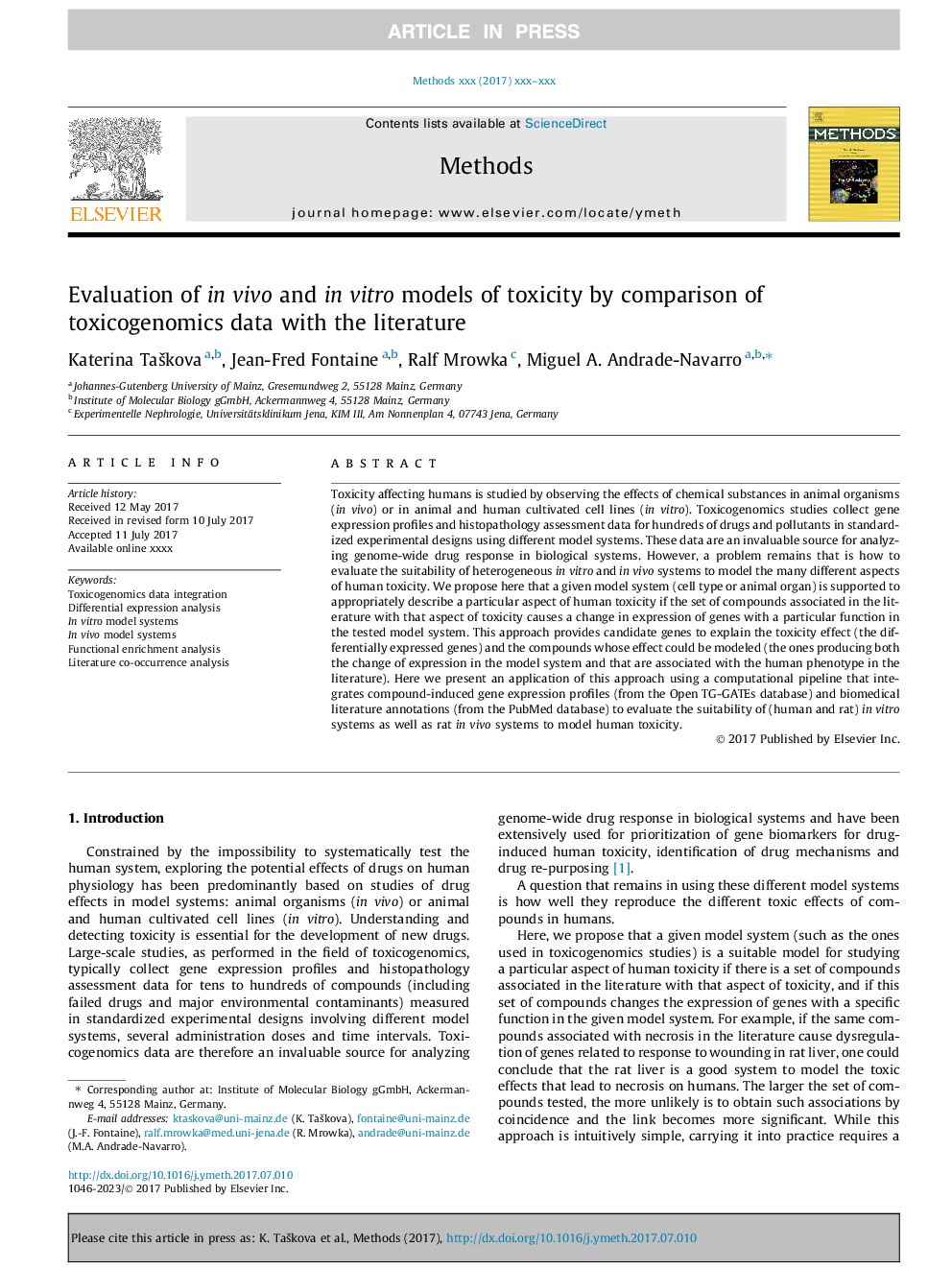| Article ID | Journal | Published Year | Pages | File Type |
|---|---|---|---|---|
| 8340155 | Methods | 2018 | 9 Pages |
Abstract
Toxicity affecting humans is studied by observing the effects of chemical substances in animal organisms (in vivo) or in animal and human cultivated cell lines (in vitro). Toxicogenomics studies collect gene expression profiles and histopathology assessment data for hundreds of drugs and pollutants in standardized experimental designs using different model systems. These data are an invaluable source for analyzing genome-wide drug response in biological systems. However, a problem remains that is how to evaluate the suitability of heterogeneous in vitro and in vivo systems to model the many different aspects of human toxicity. We propose here that a given model system (cell type or animal organ) is supported to appropriately describe a particular aspect of human toxicity if the set of compounds associated in the literature with that aspect of toxicity causes a change in expression of genes with a particular function in the tested model system. This approach provides candidate genes to explain the toxicity effect (the differentially expressed genes) and the compounds whose effect could be modeled (the ones producing both the change of expression in the model system and that are associated with the human phenotype in the literature). Here we present an application of this approach using a computational pipeline that integrates compound-induced gene expression profiles (from the Open TG-GATEs database) and biomedical literature annotations (from the PubMed database) to evaluate the suitability of (human and rat) in vitro systems as well as rat in vivo systems to model human toxicity.
Related Topics
Life Sciences
Biochemistry, Genetics and Molecular Biology
Biochemistry
Authors
Katerina Taškova, Jean-Fred Fontaine, Ralf Mrowka, Miguel A. Andrade-Navarro,
